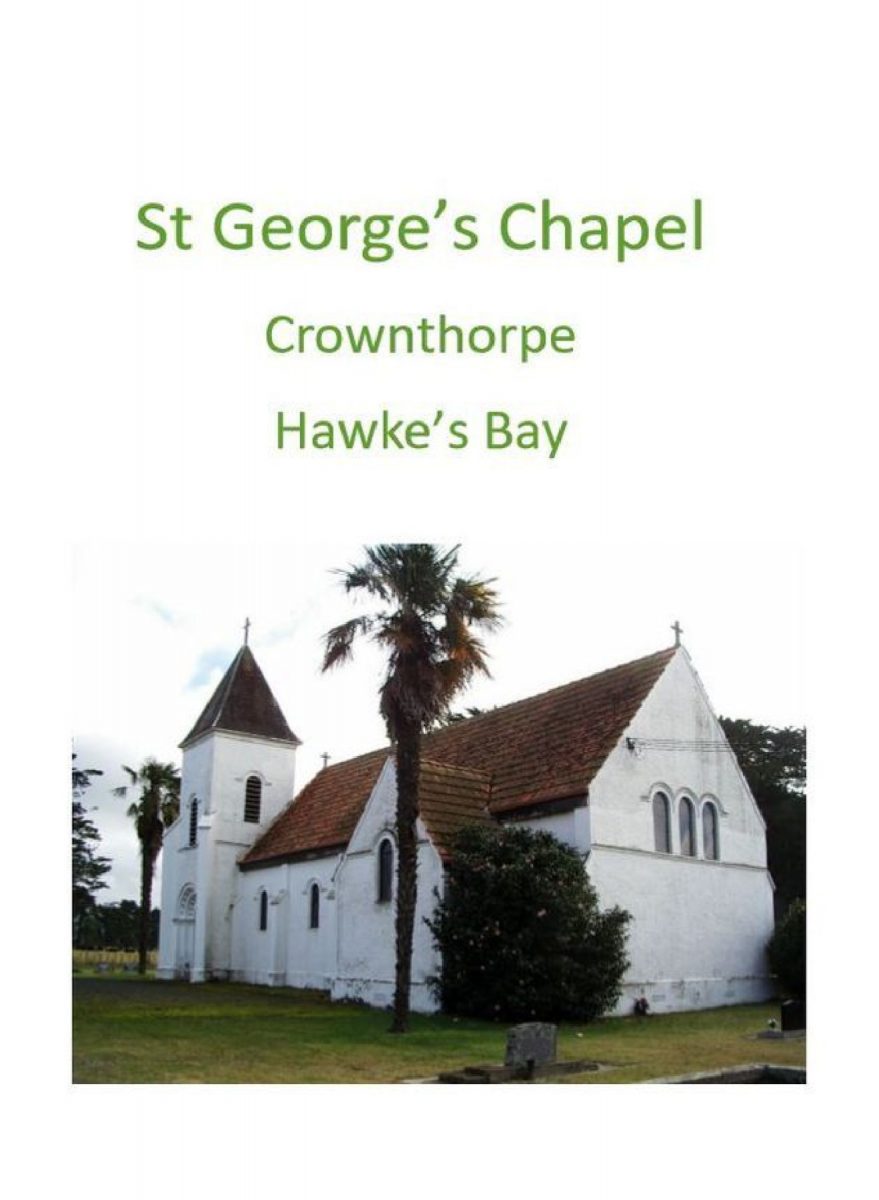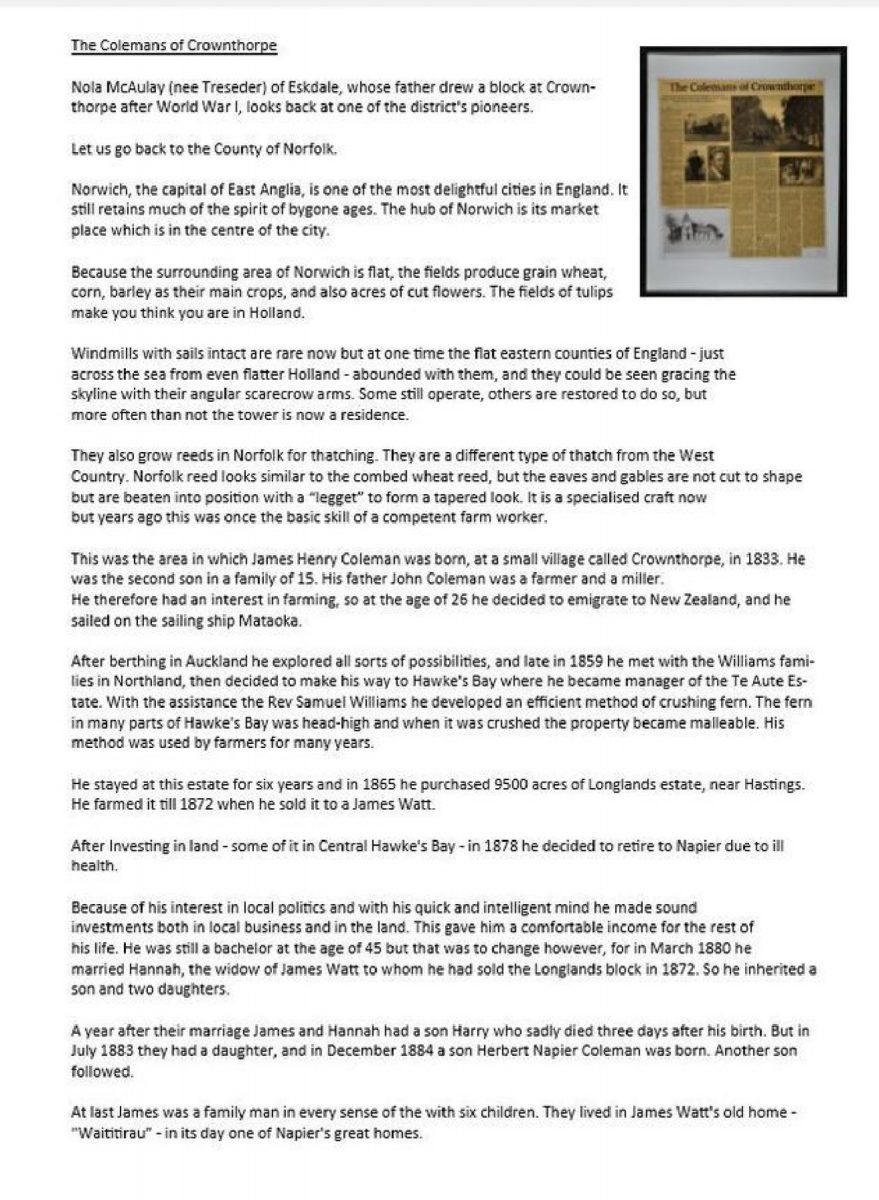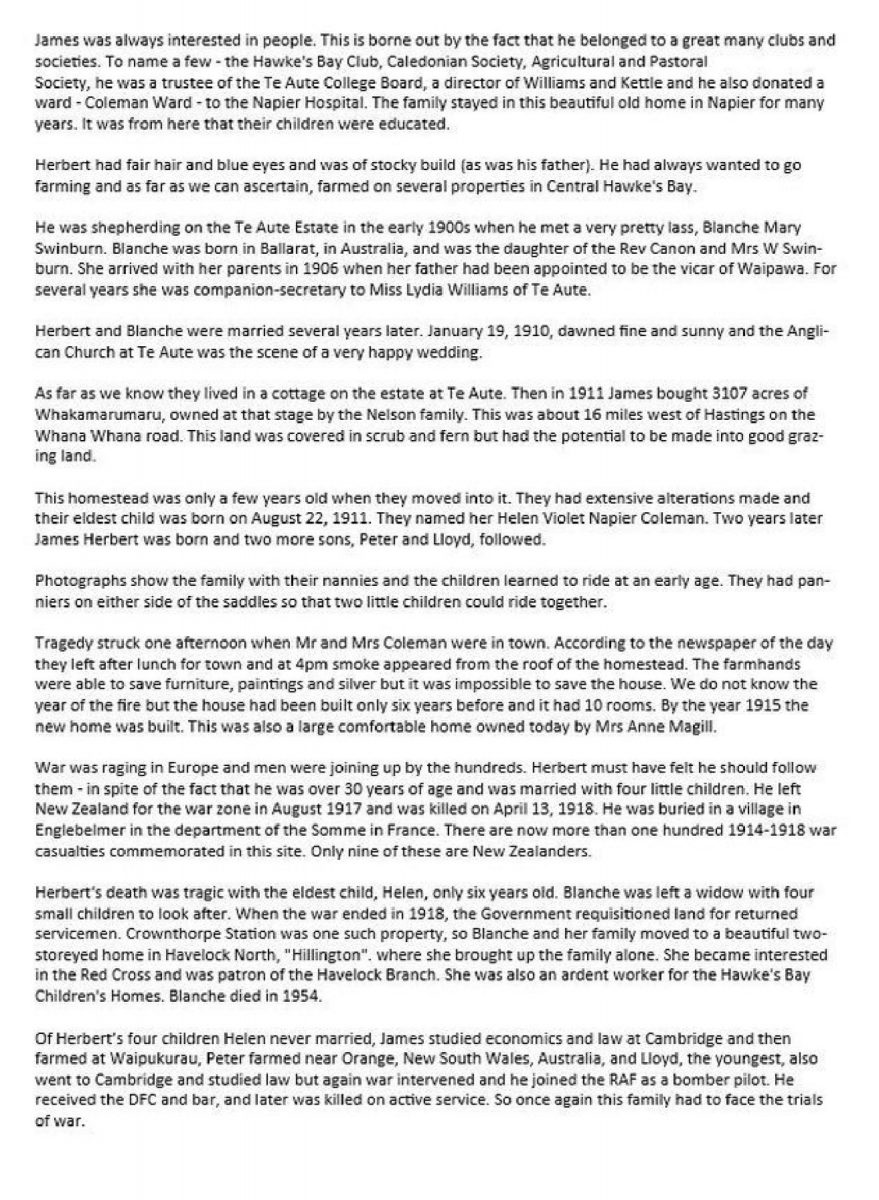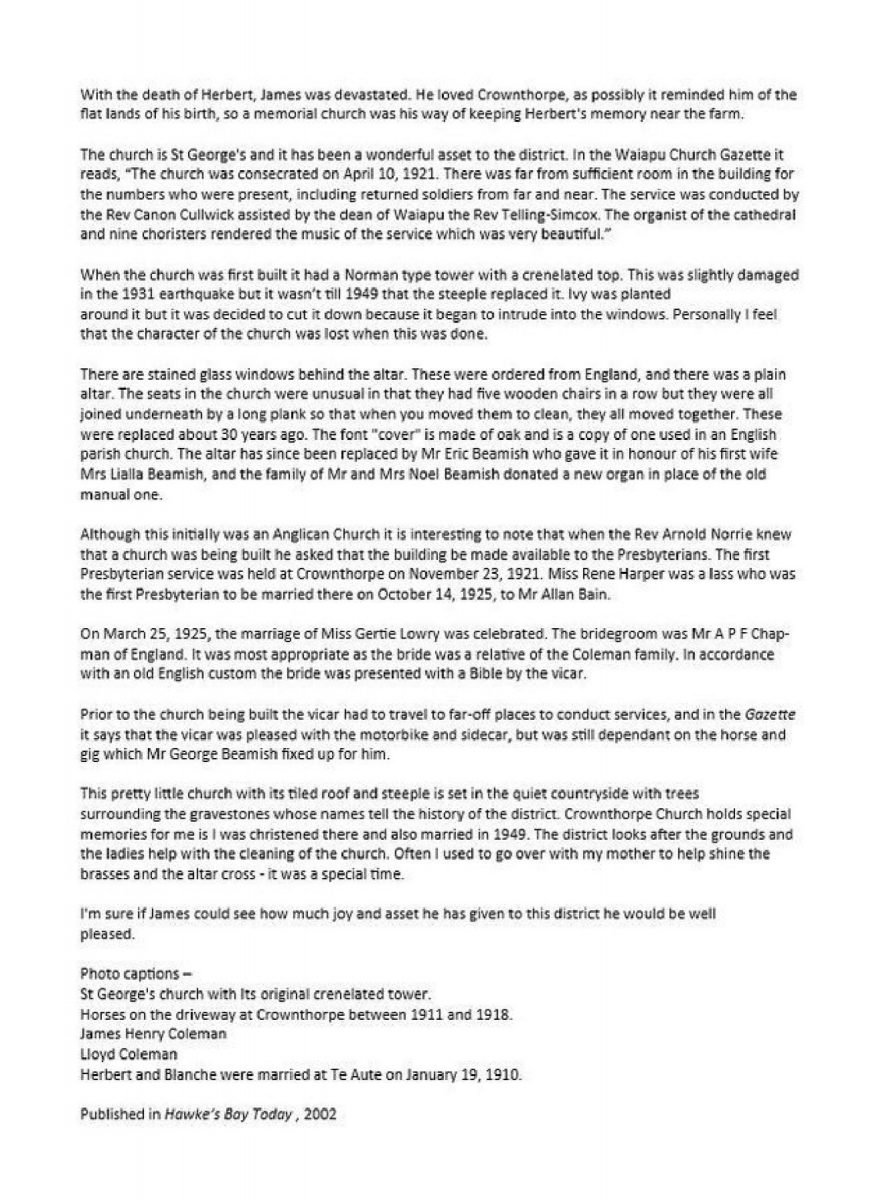James was always interested in people. This is borne out by the fact that he belonged to a great many clubs and societies. To name a few – the Hawke’s Bay Club, Caledonian Society, Agricultural and Pastoral
Society, he was a trustee of the Te Aute College Board, a director of Williams and Kettle and he also donated a ward – Coleman Ward – to the Napier Hospital. The family stayed in this beautiful old home in Napier for many years. It was from here that their children were educated.
Herbert had fair hair and blue eyes and was of stocky build (as was his father). He had always wanted to go farming and as far as we can ascertain, farmed on several properties in Central Hawke’s Bay.
He was shepherding on the Te Aute Estate in the early 1900s when he met a very pretty lass, Blanche Mary Swinburn. Blanche was born in Ballarat, in Australia, and was the daughter of the Rev Canon and Mrs W Swinburn. She arrived with her parents in 1906 when her father had been appointed to be the vicar of Waipawa. For several years she was companion-secretary to Miss Lydia Williams of Te Aute.
Herbert and Blanche were married several years later. January 19, 1910, dawned fine and sunny and the Anglican Church at Te Aute was the scene of a very happy wedding.
As far as we know they lived in a cottage on the estate at Te Aute. Then in 1911 James bought 3107 acres of Whakamarumaru, owned at that stage by the Nelson family. This was about 16 miles west of Hastings on the Whana Whana road. This land was covered in scrub and fern but had the potential to be made into good grazing land.
This homestead was only a few years old when they moved into it. They had extensive alterations made and their eldest child was born on August 22, 1911. They named her Helen Violet Napier Coleman. Two years later James Herbert was born and two more sons, Peter and Lloyd, followed.
Photographs show the family with their nannies and the children learned to ride at an early age. They had panniers on either side of the saddles so that two little children could ride together.
Tragedy struck one afternoon when Mr and Mrs Coleman were in town. According to the newspaper of the day they left after lunch for town and at 4pm smoke appeared from the roof of the homestead. The farmhands were able to save furniture, paintings and silver but it was impossible to save the house. We do not know the year of the fire but the house had been built only six years before and it had 10 rooms. By the year 1915 the new home was built. This was also a large comfortable home owned today by Mrs Anne Magill.
War was raging in Europe and men were joining up by the hundreds. Herbert must have felt he should follow them – in spite of the fact that he was over 30 years of age and was married with four little children. He left New Zealand for the war zone in August 1917 and was killed on April 13, 1918. He was buried in a village in Englebelmer in the department of the Somme in France. There are now more than one hundred 1914-1918 war casualties commemorated in this site. Only nine of these are New Zealanders.
Herbert’s death was tragic with the eldest child, Helen, only six years old. Blanche was left a widow with four small children to look after. When the war ended in 1918, the Government requisitioned land for returned servicemen. Crownthorpe Station was one such property, so Blanche and her family moved to a beautiful two-storeyed home in Havelock North, “Hillington”. where she brought up the family alone. She became interested in the Red Cross and was patron of the Havelock Branch. She was also an ardent worker for the Hawke’s Bay Children’s Homes. Blanche died in 1954.
Of Herbert’s four children Helen never married, James studied economics and law at Cambridge and then farmed at Waipukurau, Peter farmed near Orange, New South Wales, Australia, and Lloyd, the youngest, also went to Cambridge and studied law but again war intervened and he joined the RAF as a bomber pilot. He received the DFC and bar, and later was killed on active service. So once again this family had to face the trials of war.















Do you know something about this record?
Please note we cannot verify the accuracy of any information posted by the community.